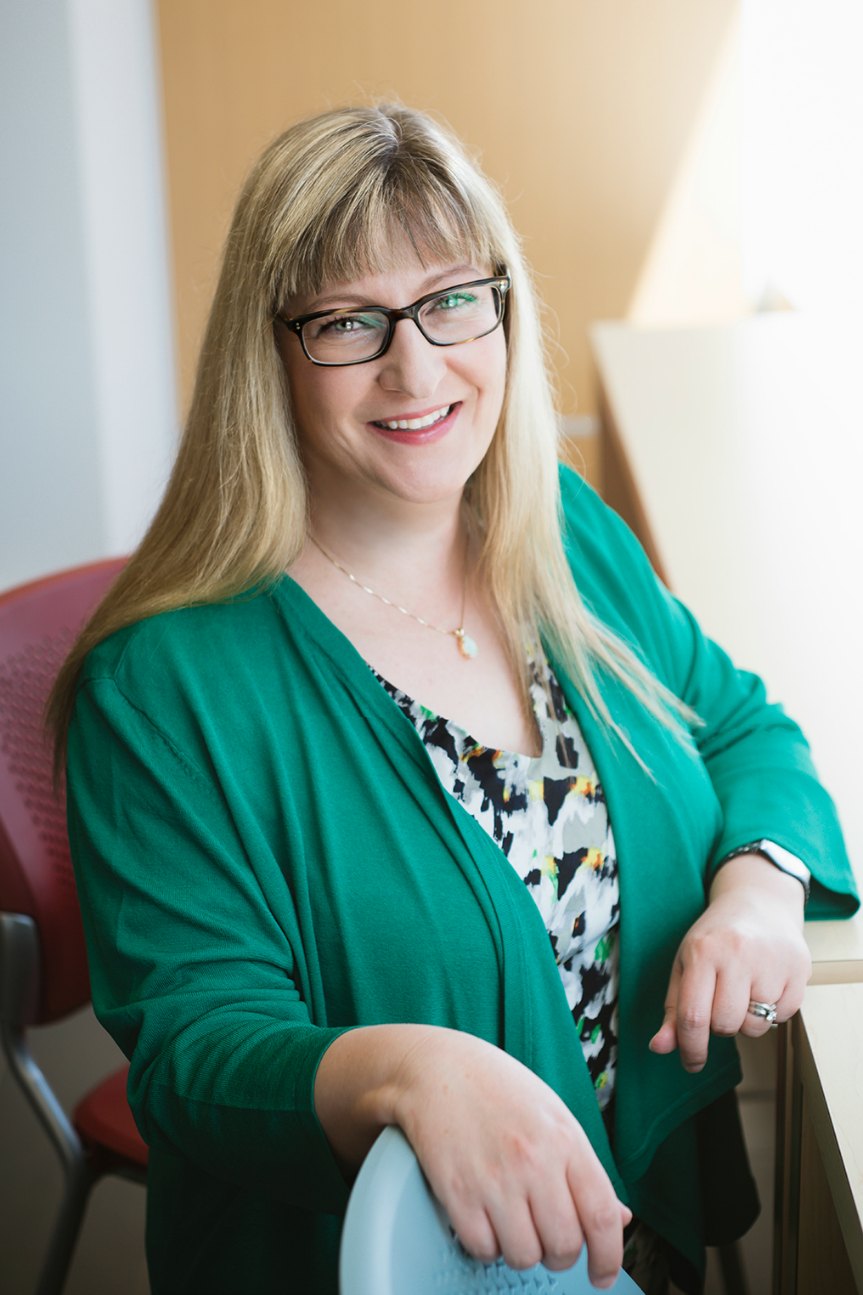
Associate professor Cheryl Sadowski addressed a knowledge gap in the Faculty of Pharmacy and Pharmaceutical Sciences by collaborating with the Faculty of Rehabilitation Medicine.
A pharmacist has to be many things to many people. Whether providing prescription information, recommendations on products in the pharmacy or answering general questions, a pharmacist is rarely without the tools needed to provide this exemplary customer service. However, there's one issue that is often overlooked when a pharmacy student is receiving their education before entering the workforce: knowledge and training in the widely used ambulatory assistive devices (AAD).
Cheryl Sadowski, associate professor in the Faculty of Pharmacy and Pharmaceutical Sciences, is also a professor who specializes in geriatrics, and is a working pharmacist in an area clinic, so her knowledge of this issue is first hand. But, the challenge was how to address this deficiency in knowledge. To find the answer, she discussed this with a colleague in the Faculty of Rehabilitation Medicine at the University of Alberta, Allyson Jones.
"We asked ourselves, 'why can't we have the students engaged in teaching this training,'" says Sadowski, which prompted an instructional design and assessment project that was published in the American Journal of Pharmaceutical Education in December 2015.
Sadowski and her group initially surveyed all the pharmacists in Alberta and discovered that almost half reported that they had no training in fitting or instruction in canes, crutches or walkers.
"To address this learning need at an undergraduate level, we developed and implemented an AAD peer-teaching module taught to undergraduate pharmacy students by physical therapy students," says Sadowski in her article. "Our objective was to determine whether peer teaching was an effective method of teaching AAD to undergraduate pharmacy students."
Objective met.
The study found conclusively that the methodology of using physical therapy students-who are well trained in best practices in use and demonstration of AAD devices-to teach pharmacy students was a success. And, unlike other faculties, this study focused on maintaining the peer-teaching model.
"The feedback from all the groups was that they really liked it," says Sadowski.
"Any opportunity for a health sciences student to collaborate with a student from another discipline has value beyond description," says Humirah Sultani, a fourth-year pharmacy student and participant in a reciprocal interprofessional peer teaching activity, where pharmacy students taught physical therapy students about inhaler types and proper inhaler technique. This was important, says Sultani, because "physiotherapy students learned a little bit more about a pharmacist's scope of practice."
"The collaboration between health sciences students is truly beneficial as we learn to develop our practices with our fellow professionals' scopes in mind," she says. "Hopefully, this is conducive to a more interconnected and resourceful health care team in future practices. Meeting our colleagues at this early time in our careers will hopefully help us build strong respect and appreciation for the different skill sets that we bring to the table in our future practices."
"This interprofessional peer teaching is a great way to develop skills that can be translated into the workplace, including leadership skills. In this instance, student pharmacists learn from physical therapy students, but this teaching model can exist across all (academic) communities," says Sadowski. "Spending time with physical therapy students doesn't happen very often, so this is an excellent opportunity, especially as the students enter the workforce, as they'll have pre-existing relationships, which can be useful for referrals, for example. This exercise is also useful for preceptors, because it shows that-for this generation of pharmacists-they respond well to learning in a more social environment.
"The dynamics of this learning was very important."